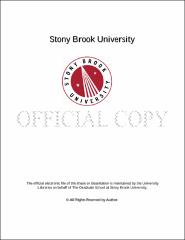| dc.identifier.uri | http://hdl.handle.net/11401/77505 | |
| dc.description.sponsorship | This work is sponsored by the Stony Brook University Graduate School in compliance with the requirements for completion of degree. | en_US |
| dc.format | Monograph | |
| dc.format.medium | Electronic Resource | en_US |
| dc.language.iso | en_US | |
| dc.publisher | The Graduate School, Stony Brook University: Stony Brook, NY. | |
| dc.type | Dissertation | |
| dcterms.abstract | In the poetry of British Romanticism, “music†has a significance that stretches across versification, figurative conceits, rapidly evolving generic modes, song lyrics, the cultural practice of music, impassioned recitation, the conspicuous silence of print, and the sale of printed books—in other words, an interrelated spectrum of issues that reaches through formalism to historicism and beyond. Music’s relevance to various romantic cultures, as well as its many tropes and topoi, mirrors a conceptual versatility that poets found abundantly instrumental when sitting down (or walking along) to contemplate the relation of self and craft, craft and culture, and, above all, sound and print. Through the remediating apparatus of print, the romantic poets (chiefly Wordsworth, Coleridge, Blake and Keats) imagined deeply nuanced systems of relation through the sign and cultural practice music, and often through conceptual oppositions that silent, printed fictions facilitate: between musical song and the “music†that emanates from the poet’s voice; between the sociability of cultural music and the isolated pursuit of self-presence via natural music; between the mere hearing of exterior sounds (i.e. phenomena) and the choice to interpret or not interpret those sounds as music (by the imagination of the culturally savvy yet nature-seeking subject); and between the fading genre of musical “lyrics†and the lyricism that was theirs to define. Considering "music" from these multiple vantages forces us to read well-worn poems differently, deepening and complicating an array of familiar critical narratives—such as the importance of musical lyricism in Wordsworth's attempt to station himself in a line of prophetic poets after Milton, or the role cultural music plays in Keats's turning away from the chummy sociability of the Cockneys to effect his own becoming as poet. Ultimately, I argue that by understanding how and why poets wrote “music†into the printed medium of romantic poetry, we further grasp romanticism’s deep investment in the relation between actual music and the oral and aural fictions of poems themselves—the “unheard melodies†—which, in turn, enlarges the way we can understand the relation of romantic poetry to various contemporary cultures. | |
| dcterms.available | 2017-09-20T16:52:50Z | |
| dcterms.contributor | Robinson, Benedict. | en_US |
| dcterms.contributor | Phillips, Rowan R | en_US |
| dcterms.contributor | Manning, Peter J | en_US |
| dcterms.creator | Gilbert, Matthew J. | |
| dcterms.dateAccepted | 2017-09-20T16:52:50Z | |
| dcterms.dateSubmitted | 2017-09-20T16:52:50Z | |
| dcterms.description | Department of English | en_US |
| dcterms.extent | 222 pg. | en_US |
| dcterms.format | Monograph | |
| dcterms.format | Application/PDF | en_US |
| dcterms.identifier | http://hdl.handle.net/11401/77505 | |
| dcterms.issued | 2016-12-01 | |
| dcterms.language | en_US | |
| dcterms.provenance | Made available in DSpace on 2017-09-20T16:52:50Z (GMT). No. of bitstreams: 1
Gilbert_grad.sunysb_0771E_12758.pdf: 16166972 bytes, checksum: beef83874ee943c1f06970c7a9d666af (MD5)
Previous issue date: 1 | en |
| dcterms.publisher | The Graduate School, Stony Brook University: Stony Brook, NY. | |
| dcterms.subject | Lyric, Media, Music, Poetics, Romanticism, Sound | |
| dcterms.subject | Literature -- Romance literature -- Music | |
| dcterms.title | The Music of Romantic Poetry and the Mediation of Romanticism | |
| dcterms.type | Dissertation | |

